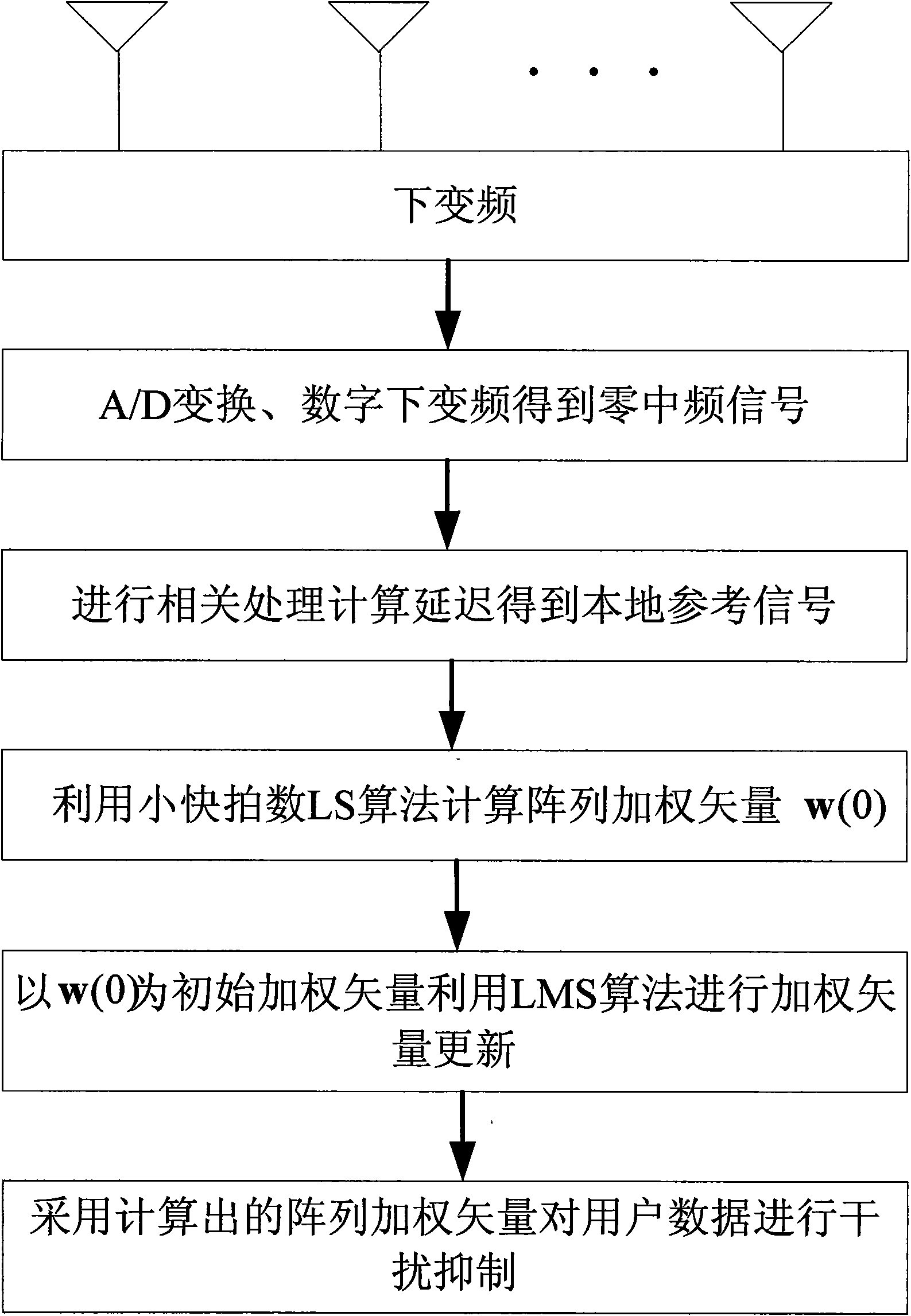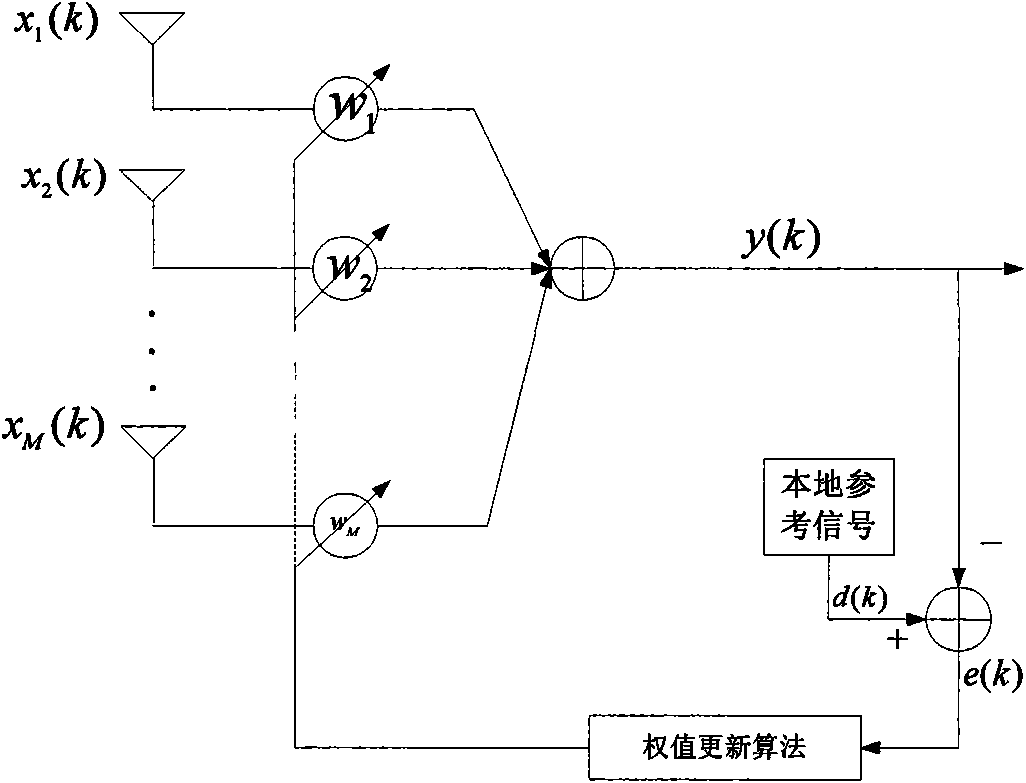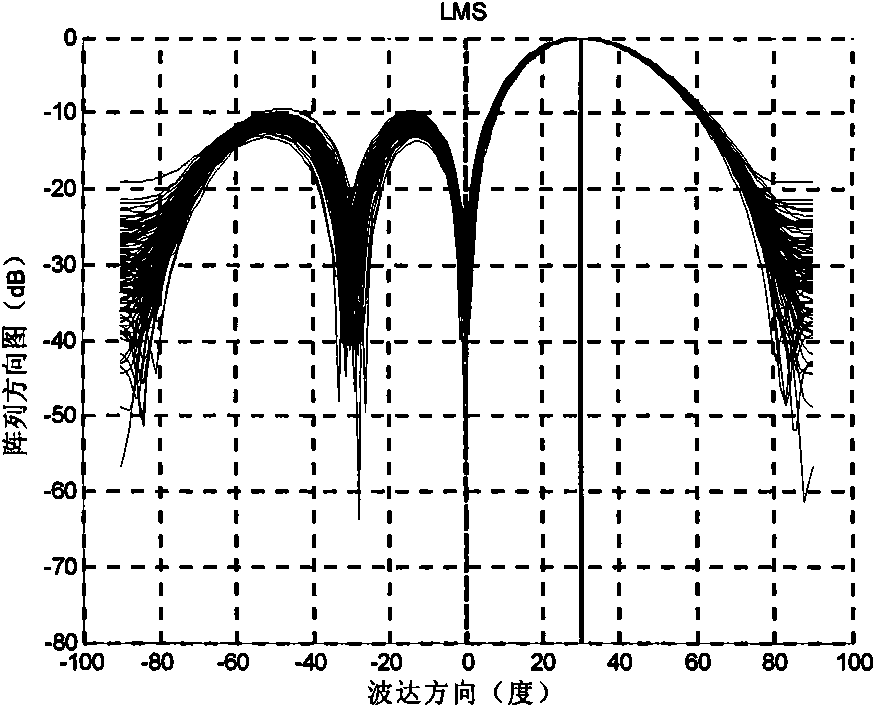Smart antenna self-adapting interference suppression method based on least square-lowest mean square
A least squares, interference suppression technology, applied in diversity/multi-antenna systems, baseband system components, shaping networks in transmitters/receivers, etc. It can reduce the sensitivity, accelerate the convergence speed, and reduce the length of the problem.
- Summary
- Abstract
- Description
- Claims
- Application Information
AI Technical Summary
Problems solved by technology
Method used
Image
Examples
Embodiment Construction
[0034] The method for adaptive interference suppression of smart antennas based on least squares and least mean squares of the present invention will be described in detail below in conjunction with the accompanying drawings of the embodiments.
[0035] The smart antenna adaptive interference suppression method based on least squares-least mean squares (Least Squares-Least Mean Squares, referred to as LS-LMS) of the present invention is an adaptive interference suppression method based on a training sequence, by using LS (Least Squares , referred to as LS) algorithm combined with LMS (Least Mean Squares, referred to as LMS) algorithm to improve the convergence speed of the LMS algorithm, that is, the transmitter periodically transmits a sequence signal known to the receiver, and the receiver itself generates the The sequence signal is used as the reference signal of the adaptive algorithm, and the weight vector is obtained by minimizing the cost function. like figure 1 shown,...
PUM
 Login to View More
Login to View More Abstract
Description
Claims
Application Information
 Login to View More
Login to View More - R&D
- Intellectual Property
- Life Sciences
- Materials
- Tech Scout
- Unparalleled Data Quality
- Higher Quality Content
- 60% Fewer Hallucinations
Browse by: Latest US Patents, China's latest patents, Technical Efficacy Thesaurus, Application Domain, Technology Topic, Popular Technical Reports.
© 2025 PatSnap. All rights reserved.Legal|Privacy policy|Modern Slavery Act Transparency Statement|Sitemap|About US| Contact US: help@patsnap.com



